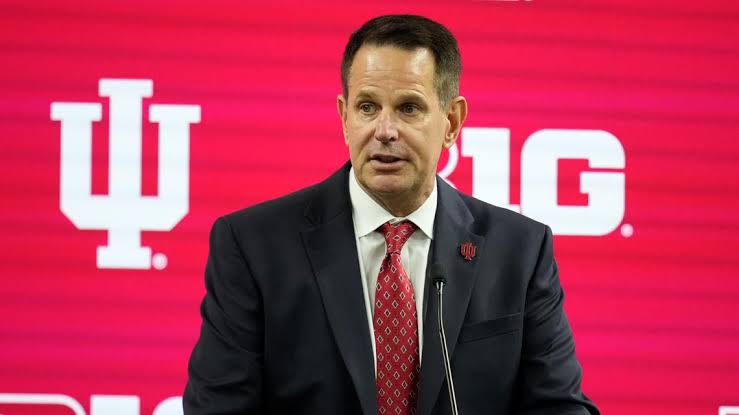**Indiana Hoosiers Head Coach Curt Cignetti Finally Accepts and Follows Athletic Director’s Vision**
Indiana Hoosiers head football coach, Curt Cignetti, has finally embraced the vision laid out by the university’s athletic director, signaling a significant shift in the football program’s approach moving forward. This decision marks a crucial turning point for the Hoosiers as they attempt to elevate their standing in the competitive world of college football.
After several months of discussions and speculation, Cignetti, who was hired as the head coach last year, has publicly affirmed his commitment to following the strategic direction outlined by Indiana’s athletic director. This is seen as a necessary move to foster stability and long-term success for the Hoosiers. The decision to align more closely with the athletic department’s goals is an acknowledgment of the larger vision for the university’s sports programs and how they interact with the football team.
In his most recent statement, Cignetti expressed his renewed focus on building a competitive, disciplined team that reflects the values and expectations of the university. He cited a need for a more collaborative approach with the athletic department in areas such as recruitment, program development, and overall team performance. The athletic director, who has been a strong advocate for modernizing the program, has worked diligently to provide the resources and support necessary for success. With Cignetti now on board with these initiatives, it is expected to bring a level of consistency and strategic planning that has been absent in previous seasons.
“At the end of the day, it’s about building a culture that resonates with the players, staff, and fans alike,” Cignetti said. “I’m excited about the direction we’re going and the role I’ll play in shaping the future of this program. The athletic director has laid out a roadmap for success, and it’s time for all of us to get behind it and make it a reality.”
The Hoosiers have had a tumultuous few seasons, struggling to find their footing in the competitive Big Ten conference. The program has shown flashes of promise but has often faltered when faced with tougher opponents. Athletic director positions have become increasingly influential in shaping the trajectory of sports teams, and Indiana has made it clear that they are committed to achieving success not just in individual games but as an ongoing, sustainable program. The partnership between Cignetti and the athletic director is now expected to take center stage in the Hoosiers’ path to rejuvenation.
In terms of on-the-field changes, Cignetti has emphasized the importance of recruiting top-tier talent and focusing on player development, while maintaining a strong emphasis on academic achievement and character. He has also expressed a desire to build a cohesive coaching staff that shares in the collective goal of returning the Hoosiers to the top of the Big Ten. This alignment between head coach and athletic director is seen as a positive step forward for the Hoosiers, particularly in a time when college football continues to evolve rapidly with NIL (Name, Image, Likeness) deals and the growing influence of conferences in shaping the sport’s future.
Moving forward, fans and analysts will be watching closely to see how Cignetti implements these changes. If his commitment to the athletic director’s vision results in tangible improvements on the field, it could signal the dawn of a new era for Indiana football. Cignetti’s ability to adapt and work in tandem with the university’s leadership will be critical in the coming seasons, as the Hoosiers look to return to the upper echelons of college football.

